USA Coin Album: Uncomfortable Fits - Part 2
Posted on 12/11/2018
Last month, I revealed some coin design features that made for awkward fits into the available space, such as the legend E PLURIBUS UNUM on the Indian Head/Buffalo nickel. This time, it will be dates that get to tell their woes on United States coins.
Until 1909, all dates on USA coins were punched into each working die, and this made for many variations in their exact positioning. During the US Mint's first 45 years or so, these date numerals consisted of single-digit punches in a wide range of sizes and styles. These punches frequently wore out or broke, and the Mint's die sinkers occasionally were forced to blend mismatched punches, giving us such oddities as the 1798 dime variety JR-3, on which the 8 is much smaller than the other numerals.
This problem wasn't solved until the 1840s, when it appears that four-digit date logotypes went into service. Though the position of the date could vary within the die field, the numerals typically matched one another. Still, errors were made.
One of the more glaring examples of an awkward fit in date placement is seen with the Large Date half dime variety of 1848. A date punch for dimes was employed by mistake, and the tops of the numerals actually overlap Liberty's base. Five years later, this error was repeated, when the date logotype for the cent was used for the single obverse die of the 1853 half cent. Other examples can be cited, but you get the idea.
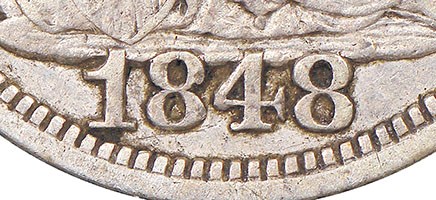 |
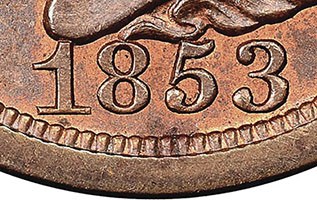 |
| 1848 Half Dime (left); 1853 Half Cent (right) |
|
Fashions in date size changed over time at the US Mint, with the dates becoming noticeably larger during the years 1898-1902. For most denominations, there was plenty of room to accommodate the larger numerals, but the Liberty Head nickel was an exception. The larger dates had to be placed ever further to the right of center to avoid conflicting with Liberty's angular bust line. This is plainly seen on the 1902-dated example illustrated, as punching the date into its die has actually warped the bust line a bit. The Mint's engraving department reversed this "growing" trend the following year, with the date shrinking to the size shown on the 1907 specimen. Starting in 1909 or late 1908, the US Mint began adding the date to each year's master dies for the existing coin types. While the size and style could vary from one year to the next, all dates would be identical within each year.
Beginning with the Augustus Saint-Gaudens gold eagle and double eagle of 1907, all new coin designs had their initial date sculpted right into the artist's model. This should have assured that this feature of the design would always fit perfectly, as the Mint's engravers would have to conform to its original style when altering the date for each subsequent year. This did indeed work for those two coins, the new quarter eagle and half eagle of 1908 and the new cent of 1909, but it led to a trap for some of the coin types introduced the following decade. The presence of two slender numerals 1 in the date left too little space for this design feature when the 1920s began. This was true in particular for two of the newer coin types.
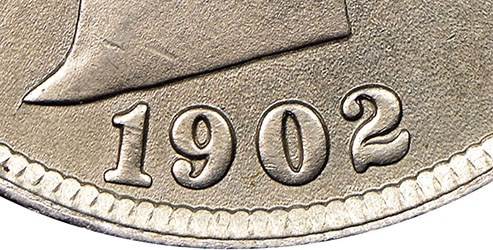 |
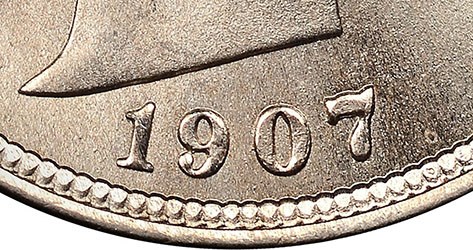 |
| 1902 Liberty Head Nickel (left); 1907 Liberty Head Nickel (right) |
|
The Indian Head/Buffalo nickel debuted in 1913. As it already had a crowded design, the date was made small and tightly spaced to avoid conflict with the adjacent rim and hair ribbons. It was not until the 1920s that a problem with this became evident: The numeral 2 doesn't fit as easily as a 1, and all four numerals thus had to be slender and tightly compacted. Because of the tendency of these coins to become dateless as they circulated, their delicate dates were a genuine concern. When John R. Sinnock succeeded George T. Morgan as chief engraver in 1925, he addressed the wear issue by making the date much broader and bolder. His first endeavor was the obverse master die for 1926, and the date thereafter clearly overlapped the Indian's hair ribbon. Only the 1931-S nickels, with their dual numerals 1, avoided this undesirable conflict.
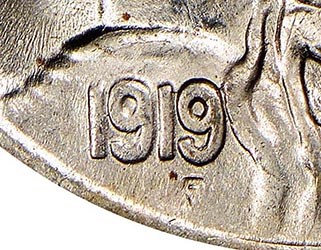 |
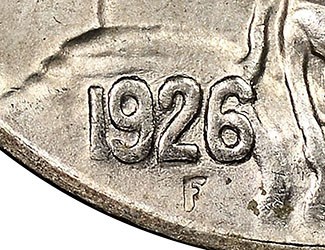 |
| 1919 Indian Head Nickel (left); 1926 Indian Head Nickel (right) |
|
A similar spacing problem arose with the new dime of 1916. When the decade turned in 1920, replacement of the second 1 with a 2 pushed the 0 almost into the coin's rim. This final numeral was thus subject to being weakly struck. The year 1921 provided some relief, but the problem thereafter lingered through 1925. Sinnock had replaced the late George T. Morgan, and in preparing the obverse master die for 1926, he completely resculpted the date. Thereafter, all four numerals were noticeably smaller, more closely spaced and shifted to the left within the field. Problem solved...
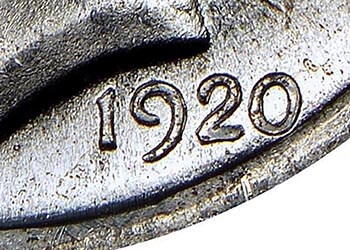 |
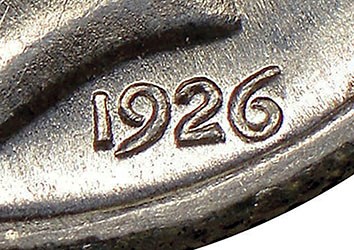 |
| 1920 Mercury Dime (left); 1926 Mercury Dime (right) |
|
Like the nickels of that time, the quarter dollars coined starting in 1916 quickly became dateless in circulation. It was Morgan who addressed the issue with a new obverse master die for 1925, this being among his final acts before dying that same year. Morgan cut away the lowest step upon which Liberty stands and sank the date into it to protect the numerals from wear. The original plain font was replaced with a more stylized one, the numerals compressed vertically to fit their new, smaller home.
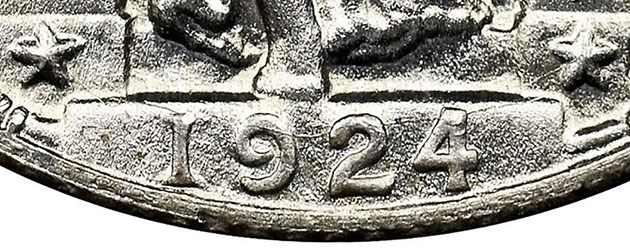 |
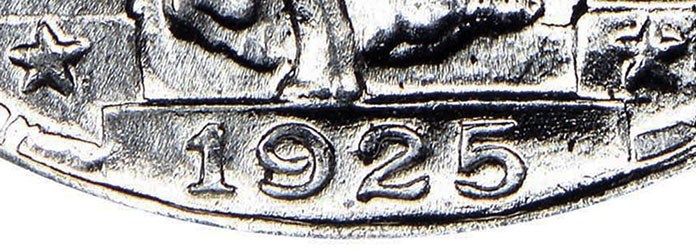 |
| 1924 Standing Liberty Quarter (left); 1925 Standing Liberty Quarter (right) |
|
Next month, this series will conclude with a look at some ill-fitting mintmarks.
David W. Lange's column, “USA Coin Album,” appears monthly in The Numismatist, the official publication of the American Numismatic Association.
Stay Informed
Want news like this delivered to your inbox once a month? Subscribe to the free NGC eNewsletter today!
Add Coin
Join NGC for free to add coins, track your collection and participate in the NGC Registry. Learn more >
